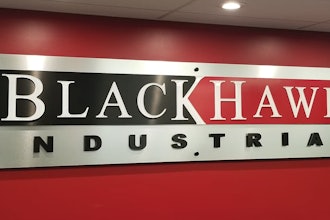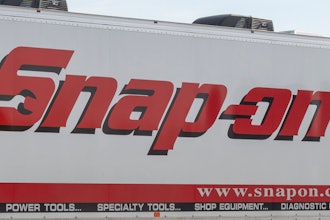This artcile first appeared in the March/April issue of ID. View it here.
E-Commerce can add to your customer base and, ultimately, the bottom line. Do you have what it takes to propel web sales forward?
A thoroughly-constructed, efficient, and cost-effective e-Commerce initiative is meant to provide a distributor’s customers with instant and real-time access to product and transactional information, as well as an efficient and error-free order entry method.
It is one measure industrial distributors have begun to consider as a viable strategy to differentiate themselves from their competitors. It may not be a viable option for every distributor, but some have found it allows for an increased opportunity to reach new customers on a global level.
“You are open every minute of every day and customers can buy from you at any time,” says Helgi Thor Leja of Fortna, a provider of supply chain solutions and consulting services, including supply chain strategies. “It’s good for you and convenient for your customers. We believe it is fair to say that e-Commerce has changed the business landscape forever and will continue to be the channel driving innovation.”
For those who embrace e-Commerce, adding to the customer base and the bottom line is the ultimate goal. However, accomplishing that goal is hardly an easy task.
According to Leja, the success of any e-Commerce initiative depends on a number of factors. Distributors need to identify or target a competitive advantage, how e-Commerce will blend with other distribution channels, how inventory will be handled, and how the supply chain will support the initiative.
“Developing the right e-Commerce strategy and successfully executing it is what separates the great from the not so great,” he says.
Great Expectations
The increased availability and prevalence of e-Commerce has also altered the expectations of customers, who now expect much more from their distributors. In addition to receiving the right quantity delivered to the correct location, customers also want it delivered immediately at the right price. But that’s not all. Customers also have grown to expect the online convenience of ordering anytime from anywhere, options for ordering on mobile devices, a superior breadth of selection, and deliveries to a choice of destinations—to the office, to the local branch for pick up, or direct drop-shipment to the job site.
“Meeting these evolving expectations and service commitments are becoming minimum standards for success,” says Leja. “Expectations have risen greatly the past 10 years and that is due to e-Commerce driving those changes.”
A Success Story
One company that has recognized this fact is BDI, a leading supplier of OEM and MRO products and services and No. 26 on Industrial Distribution’s Big 50 List this year. The “Great Recession” of 2008-09 caused the company to undertake a number of web-based projects. BDI committed to redesigning its e-Commerce website and to developing content needed to improve the online buying experience of their customers.
“Feedback has been very positive and transactions completed via BDIExpress are increasing as expected,” says BDI president John Ruth.
The company’s prime focus is decreasing transactional costs and improving information availability for the customer. However, along with that, BDI also sees reduced transactional costs on its own end.
“From there, employees within both organizations can be redeployed to tasks where they can add more value, including proper installation and application of MRO products, right-sizing stores inventory to maximize availability, and leveraging best practices to reduce downtime,” says Ruth.
Avoiding Pitfalls
While there are a number of key advantages to be gained from an e-Commerce initiative, there are a number of pitfalls distributors must be aware of and work hard to avoid. Oftentimes, the problems can begin in the distribution center.
“The distribution center must be nimble enough to accommodate same-day and overnight orders for a vast range of varied product assortments,” says Mick Mountz, founder and CEO of Kiva Systems, a maker of order fulfillment systems. “All of these items must be able to move with ease through the distribution center seamlessly, regardless of shape, size, and sales velocity.”
That’s because fast and efficient operations at the distribution center are key to leveraging a profitable e-Commerce model, continues Mountz. Finding, purchasing, and implementing the right technology to support the initiative is imperative.
“The ideal system would be a single material handling solution flexible enough to handle a very broad range of tools, spare parts, industrial products, and MRO supplies with world-class accuracy and productivity at an investment cost that pays off quickly,” says Mountz. “Mobile-robotics is one such solution — designed, built, and configured to tackle all of these requirements.”
It’s also critical for distributors to develop or tweak their infrastructure (i.e. supply chain, customer service, IT) so it can work in concert with the e-Commerce model.
“It truly is a business case developed strategy that requires synchronization across the entire organization,” says Leja.
A Trend On The Rise
According to BDI’s Ruth, e-Commerce is a trend that is becoming more prevalent in the industrial distribution marketplace. And it’s a trend he expects to continue as more companies begin to adopt Lean principles in their supply chains.
“As (they) are applied, waste can be eliminated and processes streamlined even more by e-commerce solutions,” he adds.
Data taken from Industrial Distribution’s most recent Survey of Distributor Operations suggests adding to the customer base is a very important growth strategy in the industrial distribution marketplace. Roughly 69 percent of those surveyed say that is their primary growth strategy, while 21.8 percent point to internet sales as a key growth strategy.
Also according to the ID survey, 33 percent of those who were polled say they plan to adopt some type of web ordering system within the next two years. Approximately 59 percent say online web ordering is a technology they have in use currently.
A realistic expectation for the e-Commerce trend is that it will continue to grow in the next few years and serve to complement the traditional regional and branch distribution and sales channels by offering customers another avenue for purchasing goods.
“Savvy industrial distributors are blending catalog and e-Commerce operations, and I don’t see any sign of the e-Commerce movement slowing down,” says Mountz, who notes that it is an ideal way to broaden market scope, both by reach and demographic.
“So if you aren’t looking at e-Commerce as a growth strategy, you are leaving money on the table.”






















